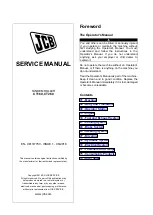
Subject to change without notice
10
set time coefficient Tc = 10µs/div,
required wavelength L = 1:(15625x10
-5
) = 6.4div.
Sine wavelength L = min. 4div, max. 10div,
Frequency F = 1kHz,
max. time coefficient Tc = 1:(4x10
3
) = 0.25ms/div,
min. time coefficient Tc = 1:(10x10
3
) = 0.1ms/div,
set time coefficient Tc = 0.2ms/div,
required wavelength L = 1:(10
3
x0.2x10
-3
) = 5div.
Displayed wavelength L = 0.8div,
set time coefficient Tc = 0.5µs/div,
pressed X-MAG. (x10) pushbutton: Tc = 0.05µs/div,
required rec. freq. F = 1:(0.8x0.05x10
-6
) = 25MHz,
required period T = 1:(25x10
6
) = 40ns.
If the time is relatively short as compared with the complete
signal period, an expanded time scale should always be
applied (X-MAG. (x10) active). In this case, the time interval
of interest can be shifted to the screen center using the X-
POS. control.
When investigating pulse or square waveforms, the critical
feature is the rise time of the voltage step. To ensure that
transients, ramp-offs, and bandwidth limits do not unduly
influence the measuring accuracy, the rise time is generally
measured between 10% and 90% of the vertical pulse height.
For measurement, adjust the Y deflection coefficient using
its variable function (uncalibrated) together with the Y-POS.
control so that the pulse height is precisely aligned with the
0% and 100% lines of the internal graticule. The 10% and
90% points of the signal will now coincide with the 10% and
90% graticule lines. The rise time is given by the product of
the horizontal distance in div between these two coincident
points and the calibrated time coefficient setting. The fall
time of a pulse can also be measured by using this method.
The following figure shows correct positioning of the
oscilloscope trace for accurate rise time measurement.
With a time coefficient of 5ns/div (X x10 magnification active),
the example shown in the above figure results in a total
measured rise time of
t
tot
= 1.6div x 5ns/div : 10 =
8ns
When very fast rise times are being measured, the rise times
of the oscilloscope amplifier and of the attenuator probe has
to be deducted from the measured time value. The rise time
of the signal can be calculated using the following formula.
In this t
tot
is the total measured rise time, t
osc
is the rise time
of the oscilloscope amplifier (approx. 2.3ns), and t
p
the rise
time of the probe (e.g. = 2ns). If t
tot
is greater than 34ns,
then t
tot
can be taken as the rise time of the pulse, and calcu-
lation is unnecessary.
Calculation of the example in the figure above results in a
signal rise time
The measurement of the rise or fall time is not limited to the
trace dimensions shown in the above diagram. It is only
particularly simple in this way. In principle it is possible to
measure in any display position and at any signal amplitude.
It is only important that the full height of the signal edge of
interest is visible in its full length at not too great steepness
and that the horizontal distance at 10% and 90% of the
amplitude is measured. If the edge shows rounding or over-
shooting, the 100% should not be related to the peak values
but to the mean pulse heights. Breaks or peaks (glitches)
next to the edge are also not taken into account. With very
severe transient distortions, the rise and fall time measure-
ment has little meaning. For amplifiers with approximately
constant group delay (therefore good pulse transmission
performance) the following numerical relationship between
rise time
tr (in ns)
and bandwidth
B (in MHz)
applies:
Connection of Test Signal
In most cases briefly depressing the
AUTO SET
causes a
useful signal related instrument setting. The following
explanations refer to special applications and/or signals,
demanding a manual instrument setting. The description of
the controls is explained in the section
“controls and read-
out”
.
Caution:
When connecting unknown signals to the oscil-
loscope input, always use automatic triggering and
set the input coupling switch to AC (readout). The
attenuator should initially be set to 20V/div.
Sometimes the trace will disappear after an input signal has
been applied. Then a higher deflection coefficient (lower input
sensitivity) must be chosen until the vertical signal height is
only 3-8div. With a signal amplitude greater than 160Vpp and
the deflection coefficient
(VOLTS/DIV.)
in calibrated
condition, an attenuator probe must be inserted before the
vertical input. If, after applying the signal, the trace is nearly
blanked, the period of the signal is probably substantially
longer than the set time deflection coefficient (
TIME/DIV.
).
It should be switched to an adequately larger time coefficient.
The signal to be displayed can be connected directly to the Y-
input of the oscilloscope with a shielded test cable such as
PR37AG, or reduced through a x10 o r x100 attenuator
probe. The use of test cables with high impedance circuits is
only recommended for relatively low frequencies (up to
approx. 50kHz). For higher frequencies, the signal source
must be of low impedance, i.e. matched to the characteristic
resistance of the cable (as a rule 50
Ω
). Especially when
transmitting square and pulse signals, a resistor equal to the
characteristic impedance of the cable must also be connected
across the cable directly at the Y-input of the oscilloscope.
When using a 50
Ω
cable. When
transmitting square signals with short rise times, transient
phenomena on the edges and top of the signal may become
visible if the correct termination is not used. A terminating
resistance is sometimes recommended with sine signals as
well. Certain amplifiers, generators or their attenuators
maintain the nominal output voltage independent of frequency
only if their connection cable is terminated with the prescribed
resistance. If a
Type of signal voltage










































